Why pickleball serving rules matters?
The serve is not just a means to initiate play; it is, in many ways, a player's gateway to victory. Unlike other sports, where points can be scored with aggressive volleys and dazzling rallies, pickleball's scoring is heavily reliant on serves. A good serve can set the stage for a rally, give players a strategic edge, and catch opponents off guard. When executed correctly, it becomes a powerful tool for dictating the flow of the game. Whether you're sending the ball soaring in a traditional volley serve or gently dropping it in a drop serve, each serves as a strategic gamble that can lead to success.
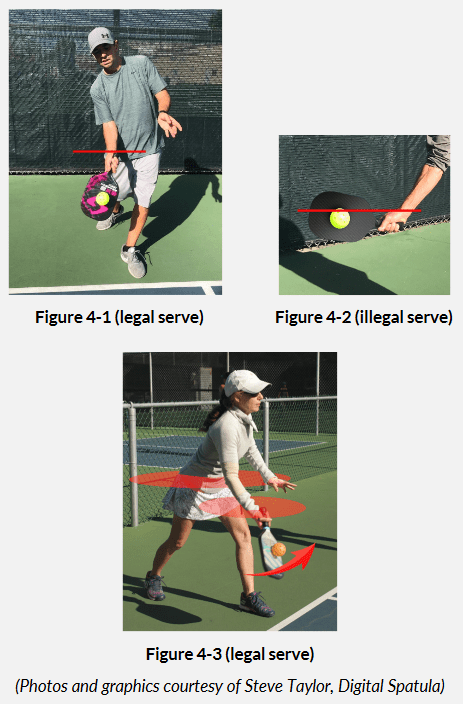
In the world of pickleball, the serve holds a uniqueness that is often understated. Picture it as a chess game where the opening move dictates the potential of the entire match. The dual nature of the serve allows for creativity and personalized strategy to flourish. Players can opt for the more aggressive volley serve, striking the ball before it bounces, or take a more conservative approach with the drop serve, allowing for a perfect bounce before making contact. The choice between these two styles can often be the fulcrum upon which a match balances. Nevertheless, understanding the inner workings of serving rules is crucial, as it enables fair and thrilling gameplay for everyone involved.
Two types of serves: Volley and drop
When stepping onto the pickleball court, understanding the two primary types of serves can significantly influence a player's performance. The two styles volley serve and drop serve present distinct advantages and challenges that cater to varying skill levels and playing strategies.
Volley serve mechanics
The volley serve is perhaps the most dynamic of the two serving options. Executed by striking the ball before it bounces, players often incorporate power and precision into their serve delivery. This motion must be performed underhand with the paddle moving in an upward arc, ensuring that the paddle blade remains below the waist at the moment of contact. Picture this as a graceful dance move an underhand sweep combined with the finesse of timing and spatial awareness. A properly executed volley serve positions the ball diagonally into the opponent’s service court, a strategic play designed to catch opponents unprepared.
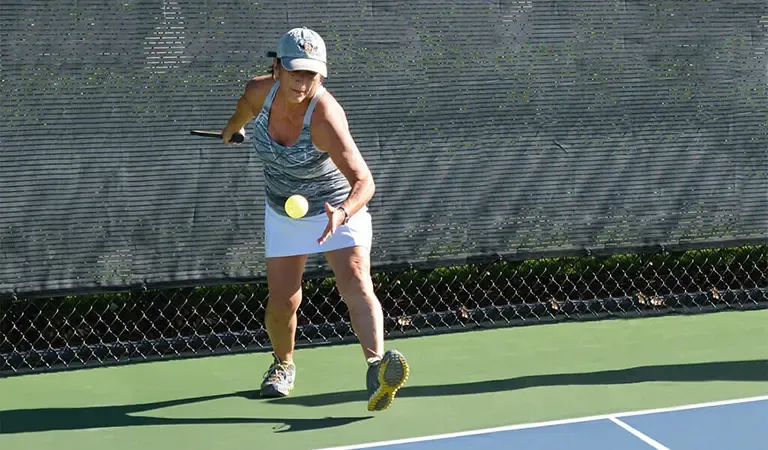
- The serve must be performed underhand, with an upward arc.
- Contact must be made below the waist this means no swinging like a tennis player where striking can soar above the waistline.
- At least one foot must remain behind the baseline to avoid foot faults, grounding the player in their rightful position and enhancing the legality of the serve.
Drop serve mechanics
On the other side lies the drop serve, which allows players more flexibility and an almost carefree approach. This method lets players drop the ball directly onto the court before making contact, free from the stringent rules that govern the volley serve. The beauty of the drop serve is that it encourages players to focus on timing and spatial awareness. Players can initiate the action from a comfortable height when dropping the ball, letting gravity do the work before making contact. While it might appear less complex, the drop serve can be deceptively effective in setting up plays.
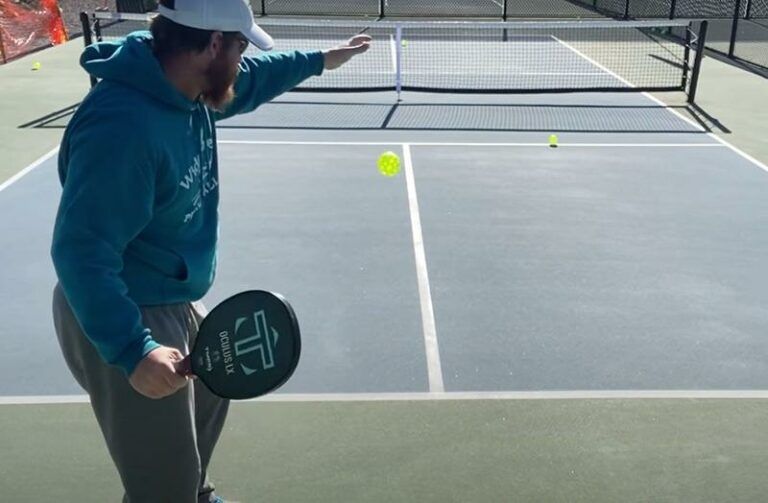
- Players drop the ball from an open palm, looking to connect after allowing it to bounce.
- There are no restrictions on how many times the ball can bounce before making contact.
- The standard foot positioning rules apply: maintaining at least one foot behind the baseline, avoiding foot faults that can disrupt the serve's legality.
The double bounce rule: A pickleball quirk
One of the more interesting rules in pickleball is the double bounce rule, which emphasizes the essence of fair play while promoting longer and more strategic rallies. This rule promotes a sense of rhythm and momentum in the game, leading to engaging and competitive exchanges between players.
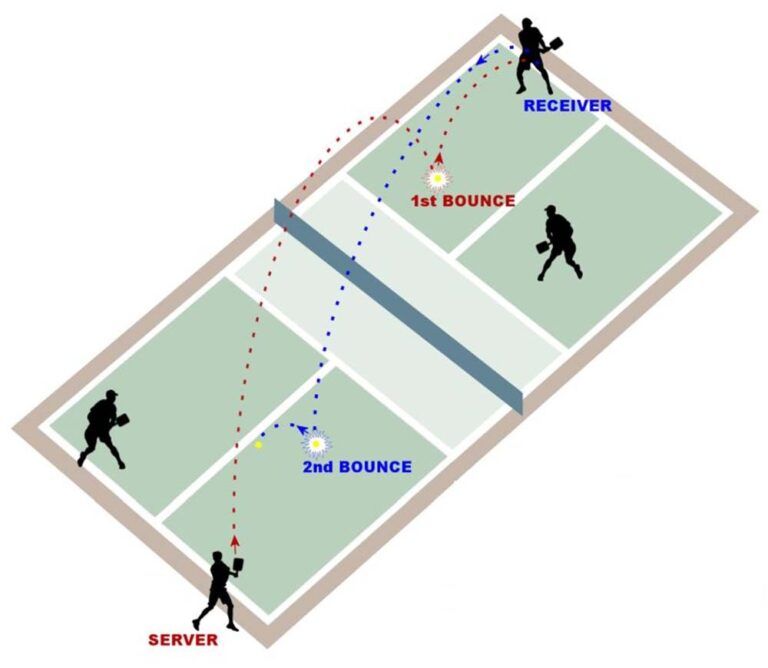
After a player serves, the receiving team must allow the ball to bounce once before returning it. Then, the serving team must also allow the ball to bounce once on their side of the court before they can hit it again. This creates a unique flow akin to a carefully choreographed dance that encourages players to strategize their movements and sets the stage for a compelling rally.
- The receiving team must let the ball bounce once after the serve.
- The serving team must allow the ball to bounce once after it crosses the net.
- Only after both teams have respected this rule can players begin to volley, creating opportunities for exciting exchanges.
Serving diagonally and landing inbounds
Positioning plays a critical role when it comes to executing serves in pickleball, particularly when serving diagonally. Each serve must land within the designated service box across the court and avoid the non-volley zone, a crucial area near the net. This diagonal aspect injects a layer of complexity and makes placement critical in every serve.
A visual of the court clearly illustrates this margin of play. The serve should come from one side and zip towards the opposite service area, and players must be cognizant of the lines as their guideposts. If a player doesn't quite meet these spatial requirements say, if the ball lands just outside the service lines or grazes the non-volley zone line the result is a fault.
- Serve diagonally align your serve with the service box opposite your position.
- Make sure the ball lands within the lines of the service box to avoid faults.
- A serve that touches the non-volley zone line is automatically considered faulty.
Calling the score: Clear communication is key
Effective communication is vital in pickleball, especially when it comes to calling the score before serving. The server must announce the score loudly and clearly to ensure that both teams remain aware of the game's ongoing state. Whether you're playing singles or doubles, a clear score call fosters clarity and maintains the rhythm of play.
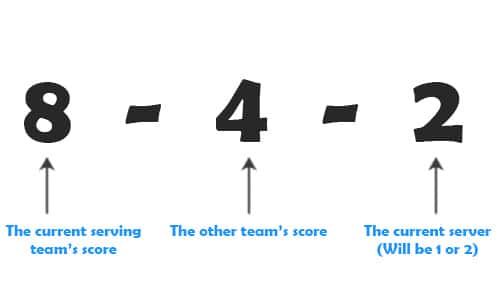
In doubles format, the serving team's score is called first, followed by the receiving team's score, and then the server number (1 or 2). For example, calling "8, 4, 2" indicates the serving team has eight points, the receiving team has four points, and it's the second server’s turn, guiding all players towards where they stand in the match.
- Always call the score out loud before serving.
- In doubles: serving team’s score, receiving team’s score, server number.
- In singles: serving player’s score, receiving player’s score.
Serving sequence: Who serves when?
Understanding when to serve is another pillar of pickleball strategy. The serving order differs in singles and doubles play, and maintaining awareness of these guidelines significantly influences the course of the game.
Doubles serving sequence
In doubles, the serving dynamics revolve around a structured sequence. Server 1 begins by serving from the right court. If this server wins the rally, they continue serving, alternating between courts. If they lose, Server 2 steps in, serving from the left. When the opposing team wins the rally, the serve transitions to them, marking a “side out.”
- Server 1 serves first from the right/even court.
- If the server's team wins, they switch sides and serve again.
- If they lose, Server 2 serves from the left/odd court.
Singles serving sequence
In contrast, singles play adopts a simpler framework. The player serves from the right court when their score is even and from the left when it's odd. There’s an element of elegance in this simplicity, showcasing how a well-timed serve can swing a match in one’s favor.
- Serve from the right court when your score is even.
- Serve from the left court when your score is odd.
- Winning the rally lets you switch sides and serve again; losing hands over the serve to the opponent.
Common serving faults: Avoiding mistakes
While mastering the serving rules, players must also be vigilant about avoiding common faults that can hinder performance. These faults can be both operational and procedural, and learning to navigate them is as essential as mastering the serve itself.
- Foot Faults: Touching the baseline or being outside the court's sideline/centerline extensions leads to a fault.
- Illegal Serving Motions: This includes hitting the ball downwards, the paddle head being above the wrist at the moment of contact, or striking above the waist.
- Serving Out of Bounds: If the serve fails to land in the correct diagonal service box, it constitutes a fault, giving up a turn to the opposing player.
Keeping a mental checklist can be beneficial, helping players avoid these pitfalls that could disrupt their serving flow and overall game rhythm.
Serving tips for beginners: Build confidence and consistency
Embarking on the pickleball journey can feel overwhelming, especially when grappling with the intricacies of serving rules. However, developing confidence and consistency in serving doesn't have to be daunting. Simple focus and practice can transform a beginner's serve into a reliable tool for competition.
- Concentrate on making consistent and well-timed contact, gradually improving your accuracy and placement.
- Aim for deep serves to pressure opponents, pushing them back and creating leverage for future plays.
- Practice various serves (both volley and drop) and begin experimenting with spin variations to keep opponents on their toes.
Additionally, maintain a positive mindset. Mistakes are part of the growth process, and learning to enjoy the game enhances individual performance and contributes to the lively spirit of pickleball.
Serving etiquette: Good sportsmanship on the court
Like any sport, pickleball thrives on a foundation of respect and sportsmanship. Etiquette during serving not only promotes fairness but elevates the overall enjoyment of the game.
- Avoid Quick Serves: Serving before your opponent is ready may lead to confusion; always wait for readiness.
- Clear Communication: Ensure that both your partner and opponents are on the same page regarding your readiness to serve.
- Call Faults Honestly: Uphold integrity by calling faults on yourself or your partner when necessary, championing the spirit of fair play.
Following these simple guidelines turns the court into a welcoming arena for all involved, fostering camaraderie and shared enjoyment.
Serving FAQs
Curiosity often circles around certain common questions regarding serving in pickleball. Here are a few frequently asked queries:
- Who serves first? The serving order is determined by the sequence rules either the first server in doubles or following traditional scoring in singles.
- What is the maximum speed of a serve? There are no set maximum speeds; however, maintaining control for accuracy is more important than sheer speed.
- Who writes the pickleball rulebook? The official rulebook is published by the USA Pickleball Association, creating standards that govern the sport.
- Are there let serves? In pickleball, let serves those that touch the net but land in the service box are valid and allow play to proceed, differing from tennis standards.
Conclusion
Understanding the serving rules in pickleball is not merely about adhering to regulations but also about embracing the spirit of the game. As players hone their server skills, they unlock new dimensions of strategy and joy that this exquisite sport offers. The rules are designed to level the playing field and enhance competition, driving players to develop their unique style while still striving for fairness. So, next time you step onto the court, remember these guidelines and serve with confidence, knowing you're ready to play your best game!










